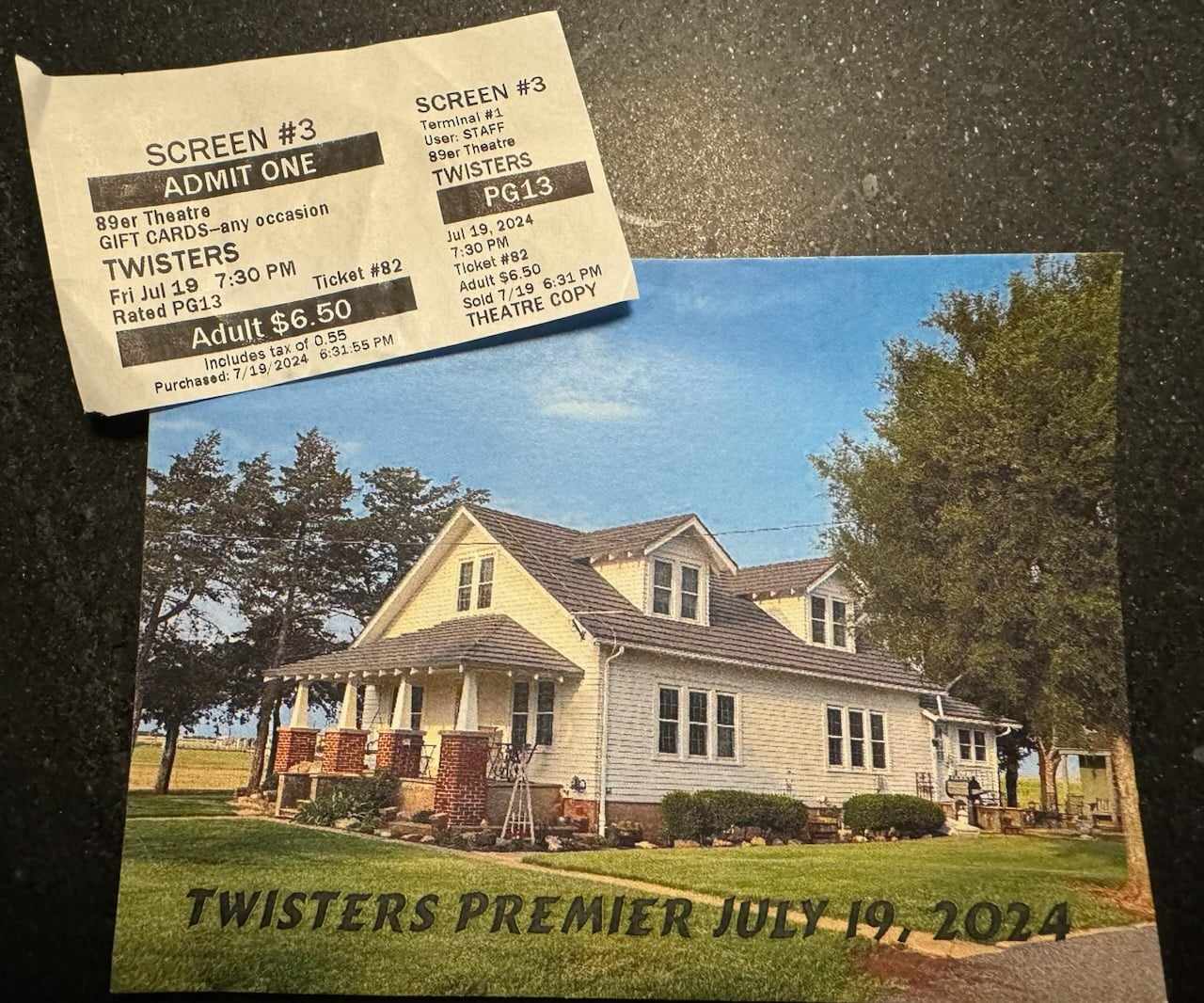Twisters: It’s about the people

Like millions of others, I recently ventured to the theater to watch the new movie, “Twisters.” I wasn’t your average disaster movie-goer, though. I had a few personal connections to the film, not the least of which is that my work and much of my life focus on supporting recovery from disasters like the tornadoes depicted in the film. I’m also from Oklahoma, and many of the sites shown in the movie were very familiar to me. In fact, my husband’s family’s homestead – built by his great-grandfather and where his cousins now live – was featured as the main character, Kate’s, family home.

As someone who’s lived most of her life in Oklahoma – the capital of tornado alley – I have experience with tornadoes and severe weather at all levels, from EF-1-rated twisters to EF-5s and everything in between. And I walked into the theater with more than a little cynicism about what I was about to see.
I know that the sounds and the scenes created by these devastating storms are often a draw to chasers or “wranglers” or curious folks of all sorts. They’re awe-inspiring and powerful when you see them up close – I know this from personal experience. But there’s more to these weather events than the wind, rain, and dark, ominous, swirling clouds. These twisters are often devastating to communities and people. I hoped that the movie would focus on humanity and not just glorify a monstrous weather event. Because, honestly, we don’t need more storm chasers in Oklahoma, y’all.
Storms like the ones shown in “Twisters” have affected communities across the U.S. this year – not just in your typical tornado alley locations like Oklahoma. We’ve seen storms affecting Ohio, Illinois, Maryland and many other states that rarely see such things. As of June, we’ve had 1,250 confirmed tornadoes and more have hit in July. People have lost their homes, their cars, their businesses and, in many cases, their lives. And the recovery from such a destructive force is hard and long, and the resources available to help are never adequate.
I enjoyed the movie, despite my educated cynicism. The CGI effects were amazing – a spot-on representation of what tornadoes are like in person. But my enjoyment was not just because of the special effects or because I saw familiar sites in towns in Oklahoma where I have spent time, like Stillwater, El Reno, Oklahoma City and even Kingfisher (where “Kate’s house” really is, but they said was Sapulpa). I enjoyed it because the writers focused on the human effects of these storms. The storyline emphasized the needs of the people above everything else. The bad guy was not just the monster storms, but the person taking advantage of those who had lost their homes and livelihoods.
So, I recommend you go see “Twisters” and learn a little about tornadoes, Oklahoma and, more importantly, about how twisters impact a community and its people. Then, if you want to know about what you can do or how you can help, here are some thoughts:
- Learn about the more than 1,250 tornadoes that have affected communities this year through CDP’s 2024 U.S. Tornadoes disaster profile.
- For a deeper dive into the impact of tornadoes on infrastructure and people, visit the CDP Tornadoes issue insight.
- Help us provide support for the long-term recovery of the communities – and the people – affected by twisters by making a gift to the CDP Tornado Recovery Fund.
If you want to talk about all things “Twisters” or about how you can help tornado-affected communities recover from storms like those depicted in the film, please feel free to reach out to me at sally.ray@disasterphilanthropy.org. And, if you want a tour of some of the spots featured in the movie, come visit us in Oklahoma. We may have twisters, but we also have a lot of amazing people who strive to navigate the long road to recovery after a tornado and help their communities rebuild. After all, even in a disaster movie, it’s really about the people.
